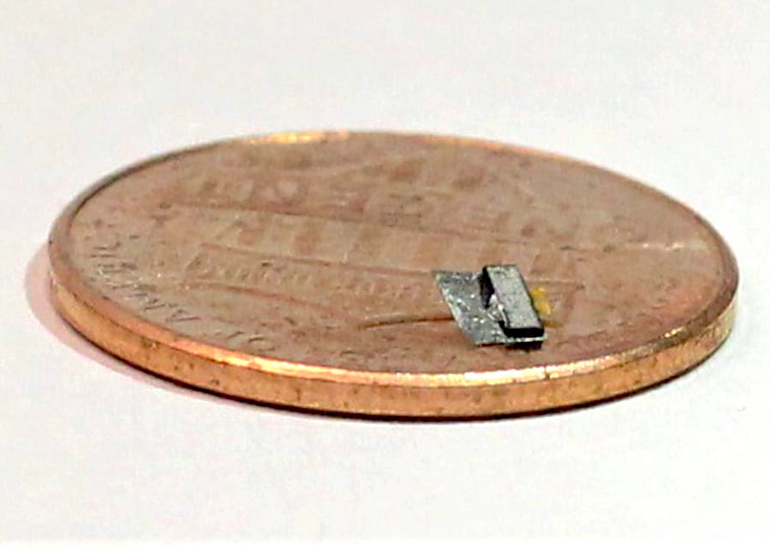Medtech
Magnetoelectric Material Stimulates Neurons Minimally Invasively
Researchers at Rice University have developed a magnetoelectric material that converts a magnetic field into an electric field. The material can be formulated…


Researchers at Rice University have developed a magnetoelectric material that converts a magnetic field into an electric field. The material can be formulated such that it can be injected into the body, near a neuron, and then an alternating magnetic field can be applied to the area from outside the body. Magnetic fields are very useful in this context, as they can easily penetrate tissue without causing any damage. This magnetoelectric effect produces a small electrical current near the neuron, effectively stimulating it, without the need for invasive implants. So far, the researchers have shown that the technology can bridge a completely severed sciatic nerve in rats, suggesting that it has potential as a component in neuroprosthetics.
Neural stimulation can have all sorts of interesting and exciting therapeutic effects, but implanting neural stimulators is invasive, and they can require later removal because of device failure or simply to change a battery. A substance that is present in dimensions small enough to pass through a hypodermic needle, but then provide a similar neurostimulatory effect under the influence of a minimally invasive device that is positioned outside the body has some obvious advantages over a conventional implant.
“We asked, ‘Can we create a material that can be like dust or is so small that by placing just a sprinkle of it inside the body you’d be able to stimulate the brain or nervous system?’” said Joshua Chen, a researcher involved in the study. “With that question in mind, we thought that magnetoelectric materials were ideal candidates for use in neurostimulation. They respond to magnetic fields, which easily penetrate into the body, and convert them into electric fields — a language our nervous system already uses to relay information.”

The material consists of the following: a piezoelectric layer of lead zirconium titanate between two magnetorestrictive layers of metallic glass alloys, onto which platinum, hafnium oxide, and zinc oxide were layered. The magnetorestrictive components in the material vibrate when an alternating magnetic field is applied. “This vibration means it basically changes its shape,” said Gauri Bhave, another researcher involved in the study. “The piezoelectric material is something that, when it changes its shape, creates electricity. So, when those two are combined, the conversion that you’re getting is that the magnetic field you’re applying from the outside of the body turns into an electric field.”
So far, the researchers have shown that the technology can restore function to a completely severed sciatic nerve in rats. “We can use this metamaterial to bridge the gap in a broken nerve and restore fast electric signal speeds,” said Chen. “Overall, we were able to rationally design a new metamaterial that overcomes many challenges in neurotechnology. And more importantly, this framework for advanced material design can be applied toward other applications like sensing and memory in electronics.”
Study in journal Nature Materials: Self-rectifying magnetoelectric metamaterials for remote neural stimulation and motor function restoration
Via: Rice University

ETF Talk: AI is ‘Big Generator’
Second nature comes alive Even if you close your eyes We exist through this strange device — Yes, “Big Generator” Artificial intelligence (AI) has…
Apple gets an appeals court win for its Apple Watch
Apple has at least a couple more weeks before it has to worry about another sales ban.
Federal court blocks ban on Apple Watches after Apple appeal
A federal appeals court has temporarily blocked a sweeping import ban on Apple’s latest smartwatches while the patent dispute winds its way through…














